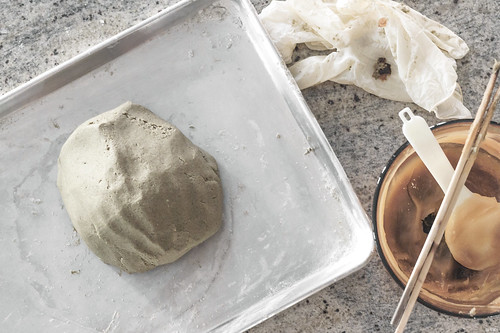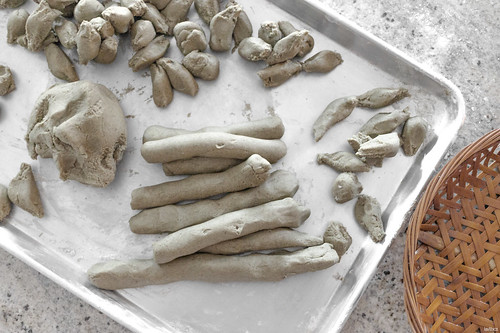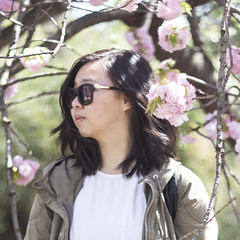My feelings towards the tria Hair Removal Laser system at the 2-month mark is, with a doubt, mixed. Had I not kept a photo record for comparison, I may have even been a tad disappointed. The lasering seems to be working well in one area but not as nicely in the others. I can't say for sure if it is due to do the type of hair or the particular area I am trying to target. Then again, there is still a month left in the promised 3-months results period. So who's to say the progress won't be exponentially better in a few weeks time?



3 zapping sessions per month seem to be the treatment norm with the biweekly laser recommendation. Unlike the first month though, I survived all 3 sessions this time at level 5 power and without the SmoothStart Calming Gel.
I mentioned how I didn't feel like the gel was very effective at numbing the pain in the last update. After going through the treatments without the gel last month, I still think the gel is not 100% necessary. The sensational difference between the laser zaps with and without the gel is negligible. The gel, if nothing else, provides a placebo effect to help calm my own nerves. There was some pain with it and without it.
It will hurt when the laser hits a hair follicle. The main variable is the degree of pain. When the laser doesn't reach any hair follicle, there is no pain. Just warmth. (I think) when the laser hits a finer type of hair, the pain is, as many others' have described already, akin to when a rubber band strike against the skin. When that beam of light hits thicker hair, however, a better-suited comparison would be as if something extremely hot briefly grazes your skin at a very specific location. The sting lasts a tad longer and reaches deeper.



Upper lips.
This is one of the areas where I am unsure if the tria Hair Removal Laser has been very effective so far. While I thought I saw slower regrowth in the shaved areas in my last update, the recent photos don't show any major differences. The bald spots still are hairless. The sparse hair spots still show little hair strands.



Armpits.
If it weren't for the armpit photos, I would have been surely disappointed. The results in my underarm region are the most reassuring towards continuing the laser treatment journey. The regrowth of the hairs is much slower and the new hairs also look thinner than before.



Knuckle hairs.
The other area where I am unsure if the tria laser is of any use. It is difficult to see in the photos. But the few hairs that I shaved and zapped are definitely growing back. Whether it is coming back at a slower rate or thinner shape, I am not completely sure.
Oh, Mister Sun. Sun. Mister Golden Sun. Please shine down on me. If I didn't know any better, I would think that Spring came a little early this year. I should just be glad that winter has only blessed us with a handful of chilly weather so far. Snow drifted by once or twice during the last two weeks or so. Otherwise, the Northeast seems to have been clouded with nothing but consistent gloom and rain.
This weather has left me thinking about Singapore more than ever. Because there has been a lack of sunshine lately, I have been missing the sunny tropical days spent there. Okay...maybe not so much the humidity. But after so many days of gray skies, I don't think I would mind it if we could get some sun in return. All the rainstorms reminded me of the giant downpours in Singapore. It was tolerable only because the wet weather never lasted all day. There was at least hope for a brighter day after the showers.
December being Singapore's rainiest month was news to me. Then again, I didn't know much about Singapore before visiting, let alone know what the country's weather would be like. I was just glad that the precipitation never stuck around. Escaping a cold home city to visit someplace warm would have been a let down if a big yellow ball of light wasn't peeking through clouds at the very least. All the colorful aspects of Singapore would have been washed out: traditional homes, foods, architecture, nature, etc.
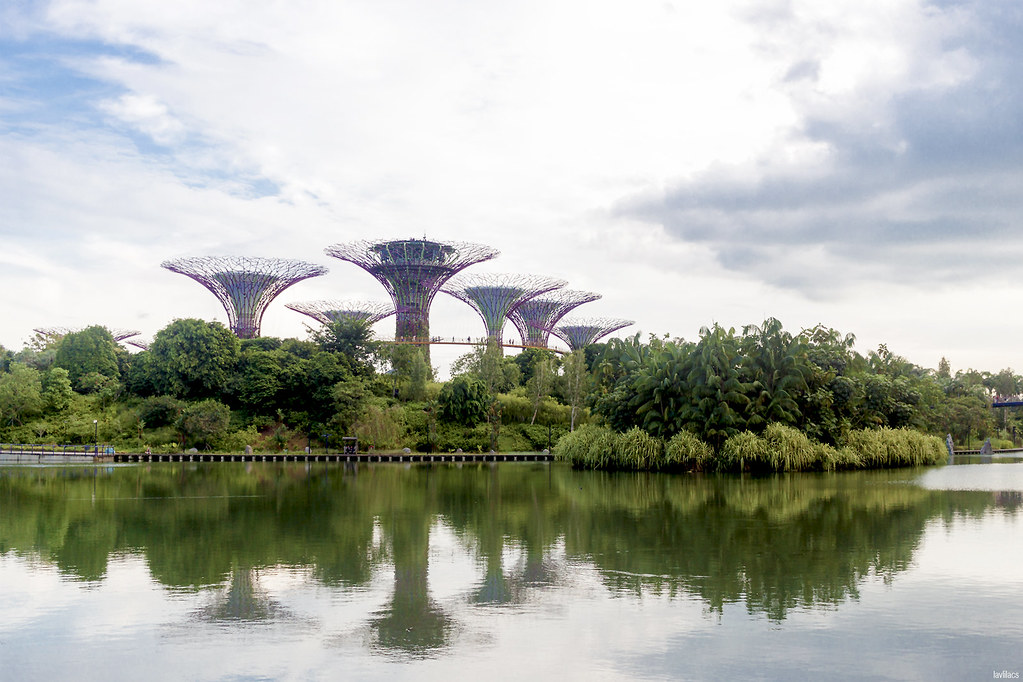
Gardens by the Bay looks like something out of a science fiction movie from afar. The tall metal structure that flares and branches at the top, reaching towards the sky, while nestled amongst a dense cluster of trees. Maybe something that could be used as an observation/command tower or a glorified luxurious home of some tech mogul?
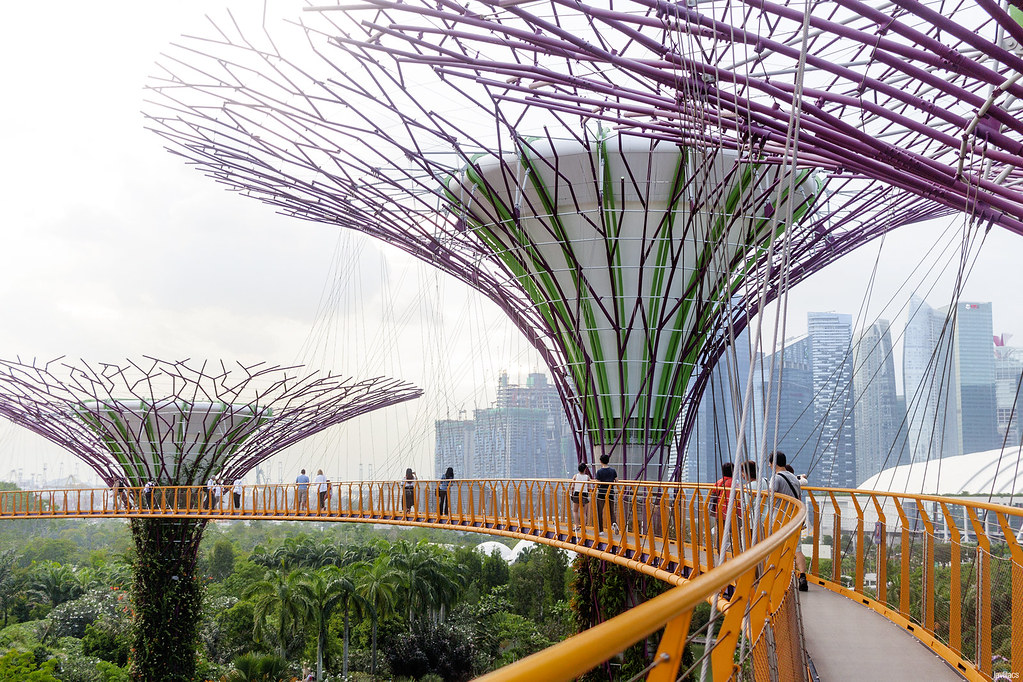
In reality, the Supertrees are actually quite scientific and environmental. They aren't nearly big enough to be people's homes. But it is a residence of sorts for a lot of flora that grows up and around its metal trunks. It even has solar power and rainwater collection abilities working behind the scenes. The view from afar, up close, or up above are all equally as breathtaking.
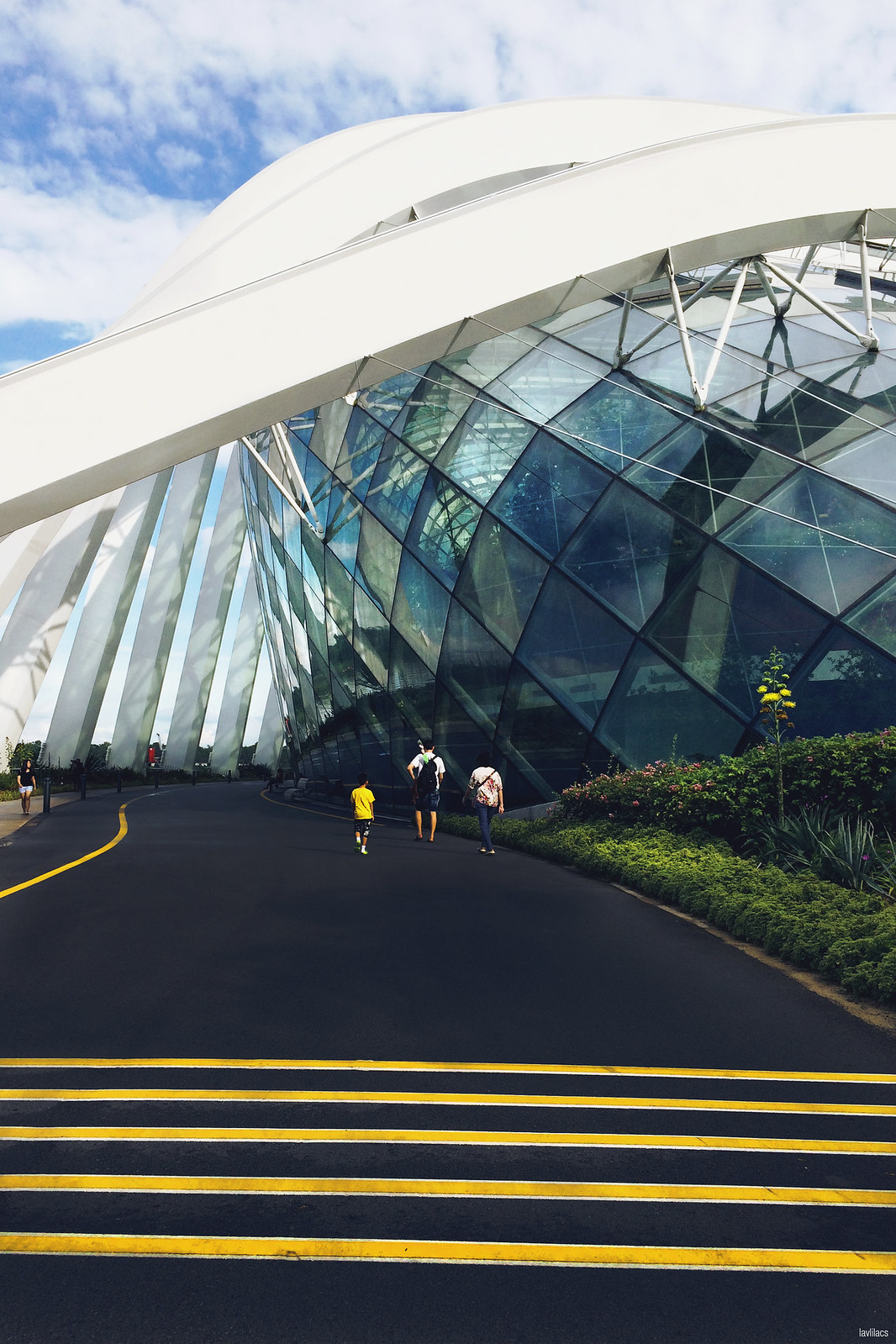
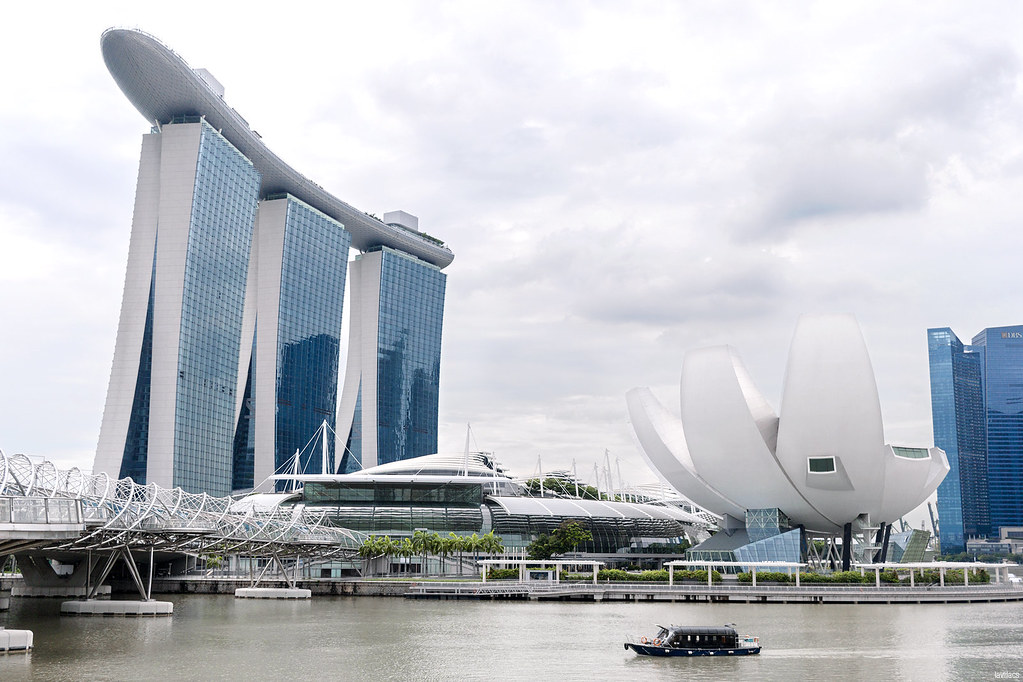
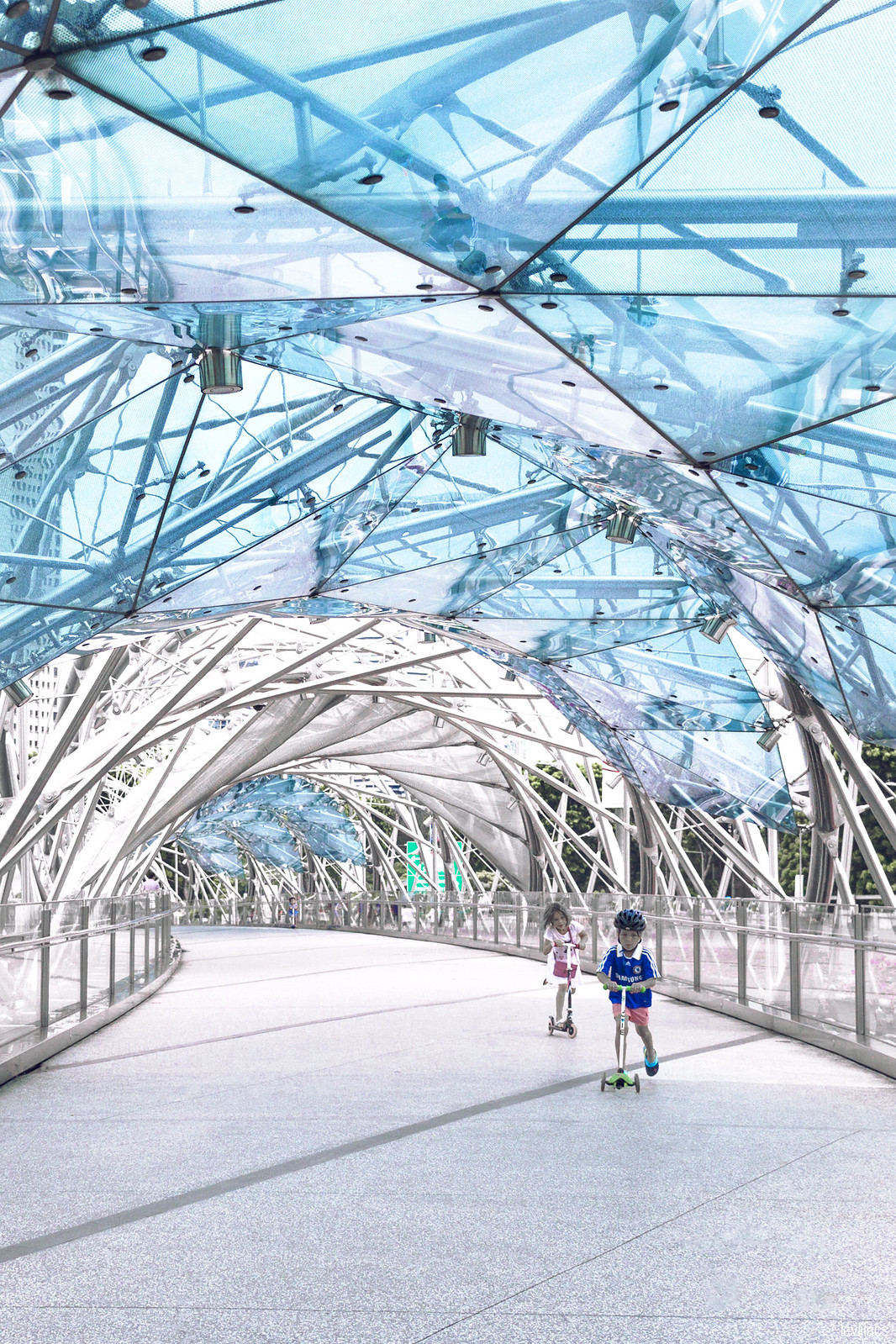
I loved visiting Marina Bay. The main reason is being able to see the different sides of metropolis Singapore in a relatively small area. The second reason is how walkable and connected all corners of Marina Bay is despite being separated by the bay. Gardens and greenery in one direction. Unique architectural feats in another; Marina Bay Sands looking ship like and the ArtScience Museum reminiscent of a lotus flower. Then little ways away are a cluster of tall branded skyscrapers indicating a financial hub. Theaters, arts, and entertainment venues are seemingly footsteps away in another direction.

Even after the sun sets and the sky becomes pitch black, Marina Bay still is surprisingly lively.
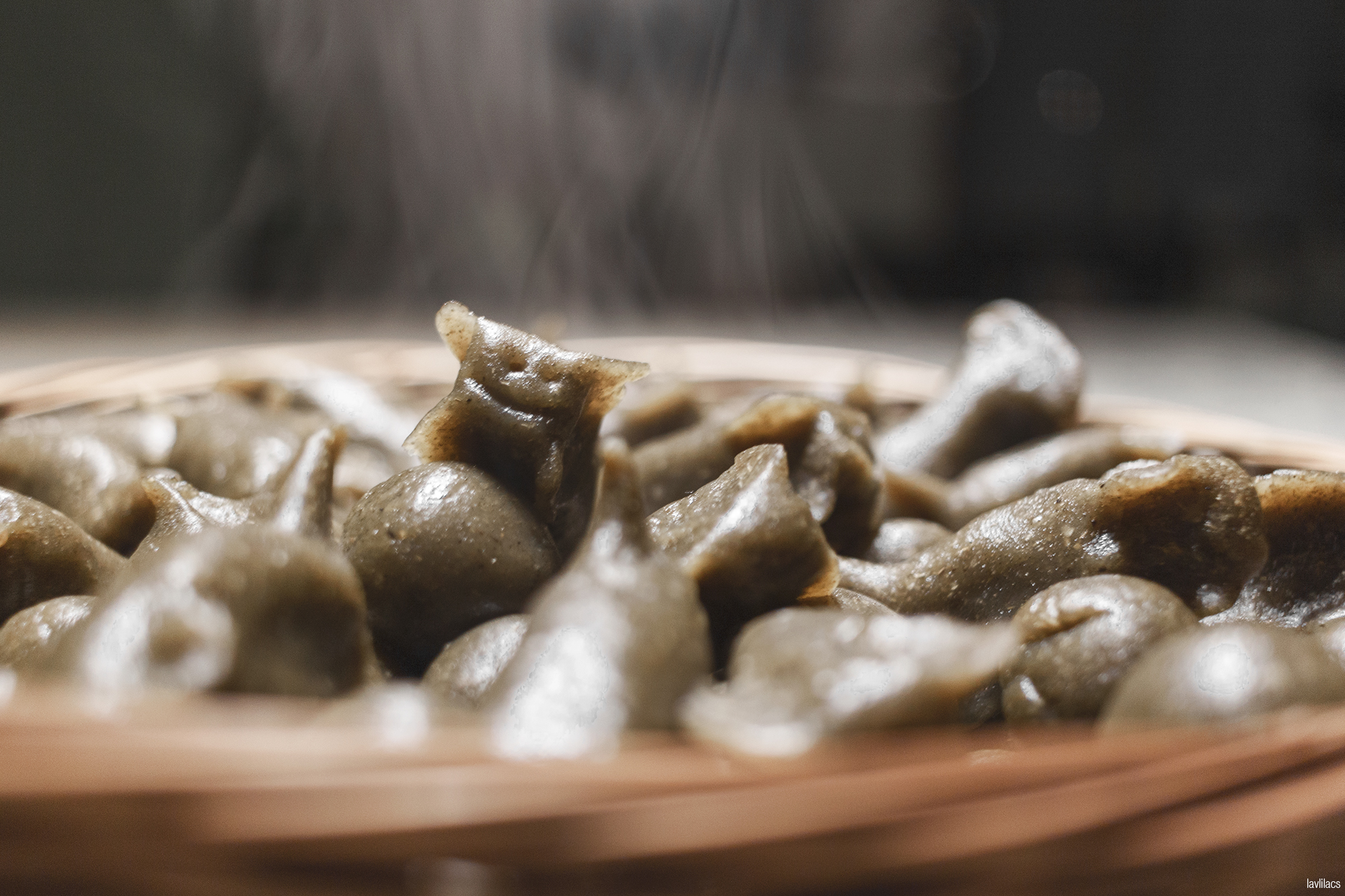
Skunk vine. Stink vine. Chinese fever vine. Paederia foetida. All those names refer to one type of plant. Yet not one sound remotely appetizing. Before I decided to make a record of this recipe, I hadn't a clue what the name of this ingredients was in English or Chinese. It was just something that was a part of a food Grandma used to make occasionally and something that I liked.
Good thing for the internet! It seems like this plant originated from eastern and southern Asia and grows mainly in tropical, hot and humid, climates. Some sources classify the skunk vine as a type of weed due to its fast growing and invasive tendencies. In Taishan, it is sun-dried and ground into a powder to be used in various foods.
Foo keen haang yuan 烏芹藤圓 is what Grandma calls the dark green, almost black, chewy spheres in Taishanese. I took it upon myself to, quite literally, translate it into skunk vine rice cake balls. There are also a couple of other Chinese names for this as well, cow poop ball 牛屎圓 and chicken poop vine ball 雞屎藤圓. Again, neither are redeeming in any way, shape, or form. But they really don't taste as bad as the name would suggest. Honestly!
I am a huge sucker for nostalgia. Despite my curiosity to try new things, I can't help but also yearn to revisit old favorites I have fond memories of. Recounting all those memories I made in Asia the last few months got me thinking about these unfortunately named treats that I remember Grandma made. But let's face it, my popo isn't getting any younger and the amount of traditional homestyle foods she's made in the recent years have greatly diminished. If I were to crave these in the future and knock on wood Grandma cannot make these unique foods anymore, it would become a lost art of sorts. I thought it would be an interesting way to not only keep a record of Grandma's recipes and learn about some Chinese traditions but also to spend more time with my popo.
Even if no one else finds this interesting, this will be my digital library of personal recipes.
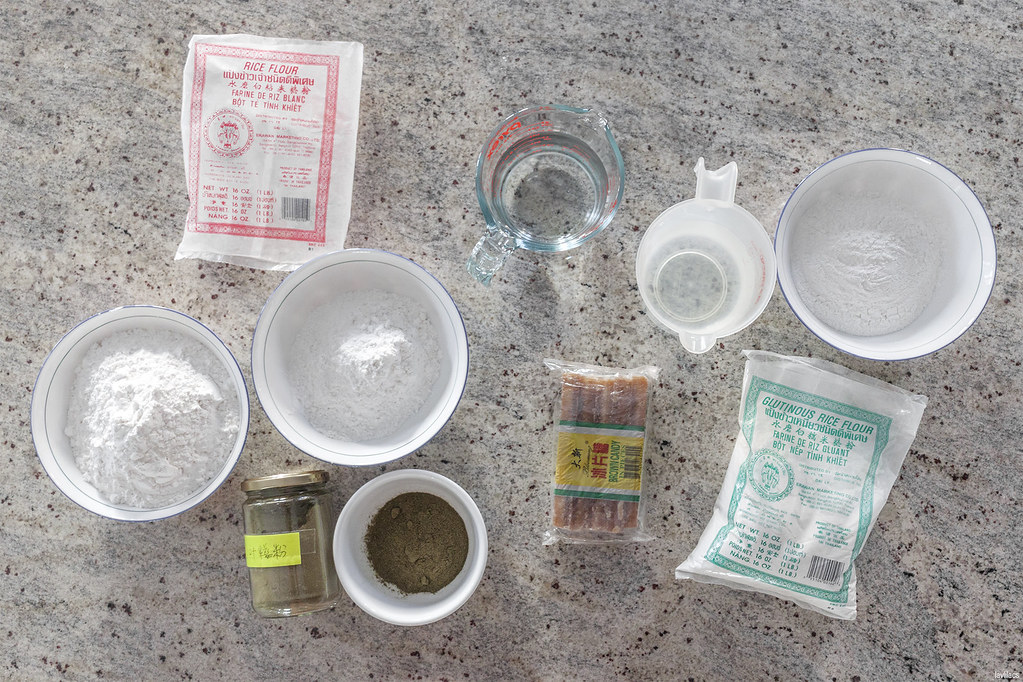
Skunk Vine Rice Cake Balls - Foo Keen Haang Yuan - 烏芹藤圓
Dry ingredients mixture
3 cups rice flour 米粉
1 cup glutinous rice flour 糯米粉
1-3 tbsp of skunk vine powder 烏芹藤粉*
Sugar paste
1 package of Chinese brown sugar 冰片糖 (or 1.5 cups cane sugar)
1 cup rice flour 米粉
3 cups water 水
* The amount of skunk vine powder is totally up to personal taste. Skunk vine is supposed to have a very strong sulphuric taste. The very traditional foods made with it, I think, uses a lot of powder to achieve a really pitch black final product. But I find the taste is too strong for my liking if I put too much (the most I've tried is 4 tbsp). Sourcing skunk vine powder outside of China might be a little difficult even in densely Chinese populated areas.
Directions
1. Mix the dry ingredients together. (I prefer sheet pan or anything wide and shallow. But a big bowl works too.)
2. Place the sugar and half of the water into a pot and bring it to a boil.
3. Reduce flame to a low-medium heat after all the sugar has melted.
4. Mix 1 cup of rice flour and the remaining half of the water together. Mix well!
5. Pour the rice flour + water into the sugar syrup when after all the sugar is melted.
6. Keep stirring the simple syrup and rice flour mixture until it starts to bubble and thicken. Before careful to not to burn the bottom.
7. Add the piping hot sugar paste to the dry ingredients mixture a little at a time to form a dough. Not all of the sugar paste will be used! Add just enough for everything to come together and not be sticky. A little paste goes a long way.
I recommend using chopsticks at first to stir the paste and the flours quickly. As the flour starts to make little clumps of dough, put on powder-free plastic gloves and start kneading by hand. If you can tolerate insane heat, then feel free to go barehanded.
8. Knead for about 10-15 minutes or until whenever all the flour and paste fully incorporates to form a dough ball. The dough should be soft, pliable, not sticky, and won't crumble when squished. A texture similar to fresh Play-doh. Even having a drier dough is okay. As long as it can be rolled into balls and still holds its shape relatively well.
9. Wet a bamboo steamer or place a steamer cloth on a pan.
10. Shape the dough into small grape-sized balls. Dog shapes are optional.
11. Boil water in a wok or pot.
12. Reduce flame to a medium and place the steamer full of rice cakes inside.
13. Before covering it with the lid, generously sprinkle water all over the rice cakes to prevent too much sticking and give it a nice sheen.
14. Steam on a medium flame for 30 minutes or until the rice cakes are cooked through.
15. Eat and enjoy!
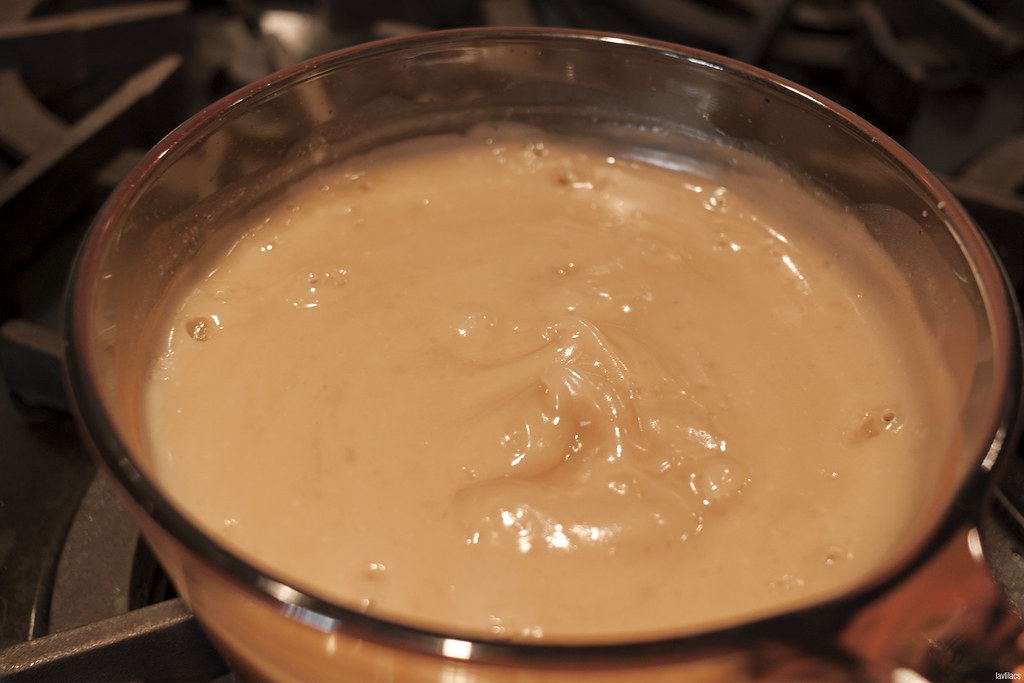
The sugar paste should ultimately look similar to the above photo. It won't bubble a ton but it will make small spurts and be a little bubbly. This is also completely edible as is.
The key to forming the dough is to work fast while the sugar paste is hot. Grandma says that the sugar paste is what helps to make the final product a bit soft. The glutinous rice flour also gives a slight chewiness. But overall, it should be quite firm with some chew.
If too much sugar paste is added and the dough is too sticky, add a little more rice flour or glutinous rice flour to the dough. If the dough is too dry, add a little more paste. If there is no more paste, add a bit of water. There isn't an exact science to this. Grandma just did everything by feel and approximation. She called me foolish for wanting to know exact measurements.

One of my fondest memories with these rice cake balls are the dog-shaped treats. I remember loving to pick those out whenever Grandma made them when I was a kid. The reasons for making them were never clear to me. They were just cute and unique amongst a basket full of boring spheres.
I only just learned from Grandma that these skunk vine rice cake balls are actually made for a specific Lunar calendar holiday, March 3rd 三月三節. When questioned, popo said she didn't know the specific reason for making such a food and it was just a tradition she kept by. Foo keen haang yuan were made to be eaten. The dogs were made to be hung by the outermost door as a home protector from bad luck and evil spirits.
Besides the skunk vine balls, she said bao kok (or ham sui kok) and something called wah hoi are also made in celebration of the March 3rd holiday.
Grandma's dog making method:
Pinch out a tail. Followed by ears. Then four legs. Get a toothpick and poke up the eyes, nose, and mouth. Her highlight was, of course, including a butthole for accuracy.
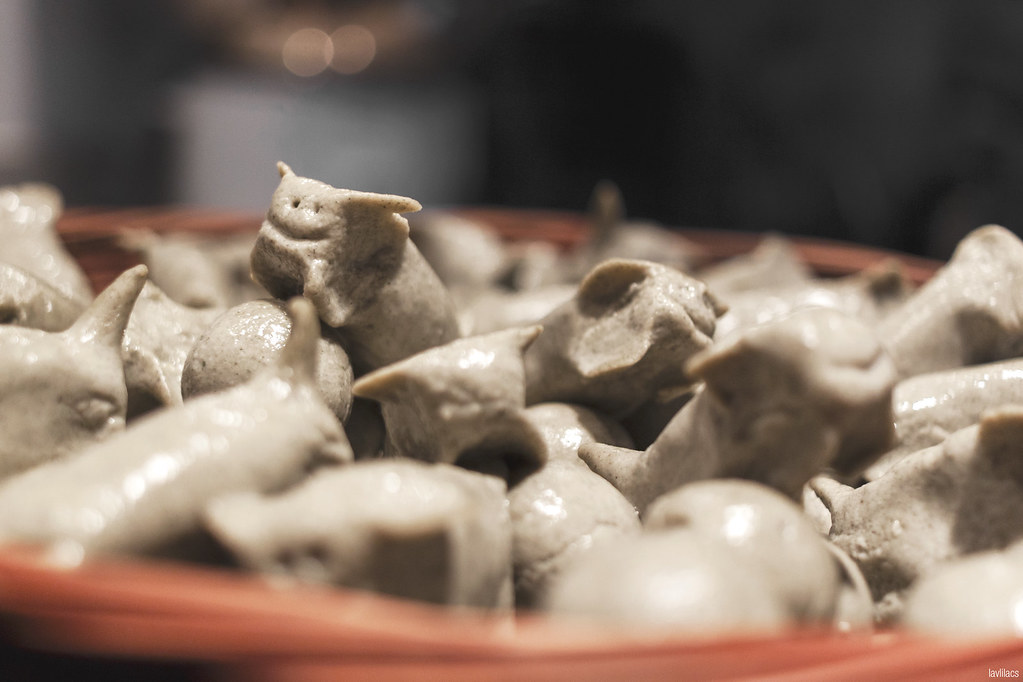
Grandma uses bamboo baskets to hold the rice cakes. The hole-y nature of it helped to let any of the extra water through. If not the rice cakes at the very bottom of a pan would be too soggy. She also suggested to only have 2-3 layers of rice cakes in order to avoid having any uncooked ones at the center of the pile. Keeping the dog-shaped ones on top will help to dodge any accidental severings of its delicate body parts.

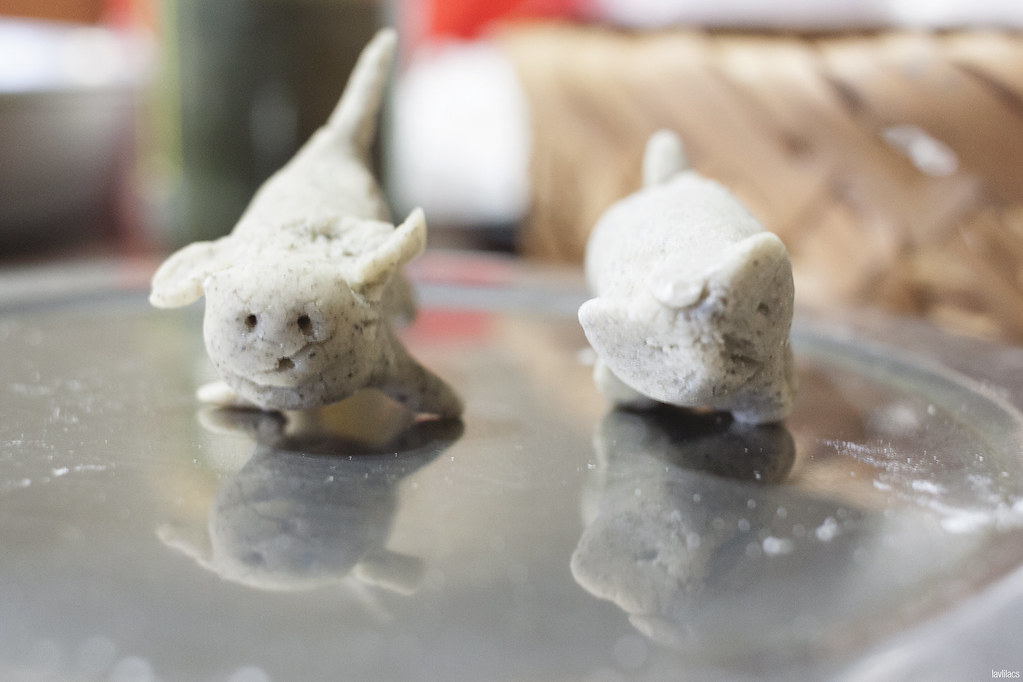
Like I mentioned earlier, Grandma hasn't made these in a while. I had forgotten how her "dogs" looked. Would you agree and think her version (on the right) looks owl-esque?






















